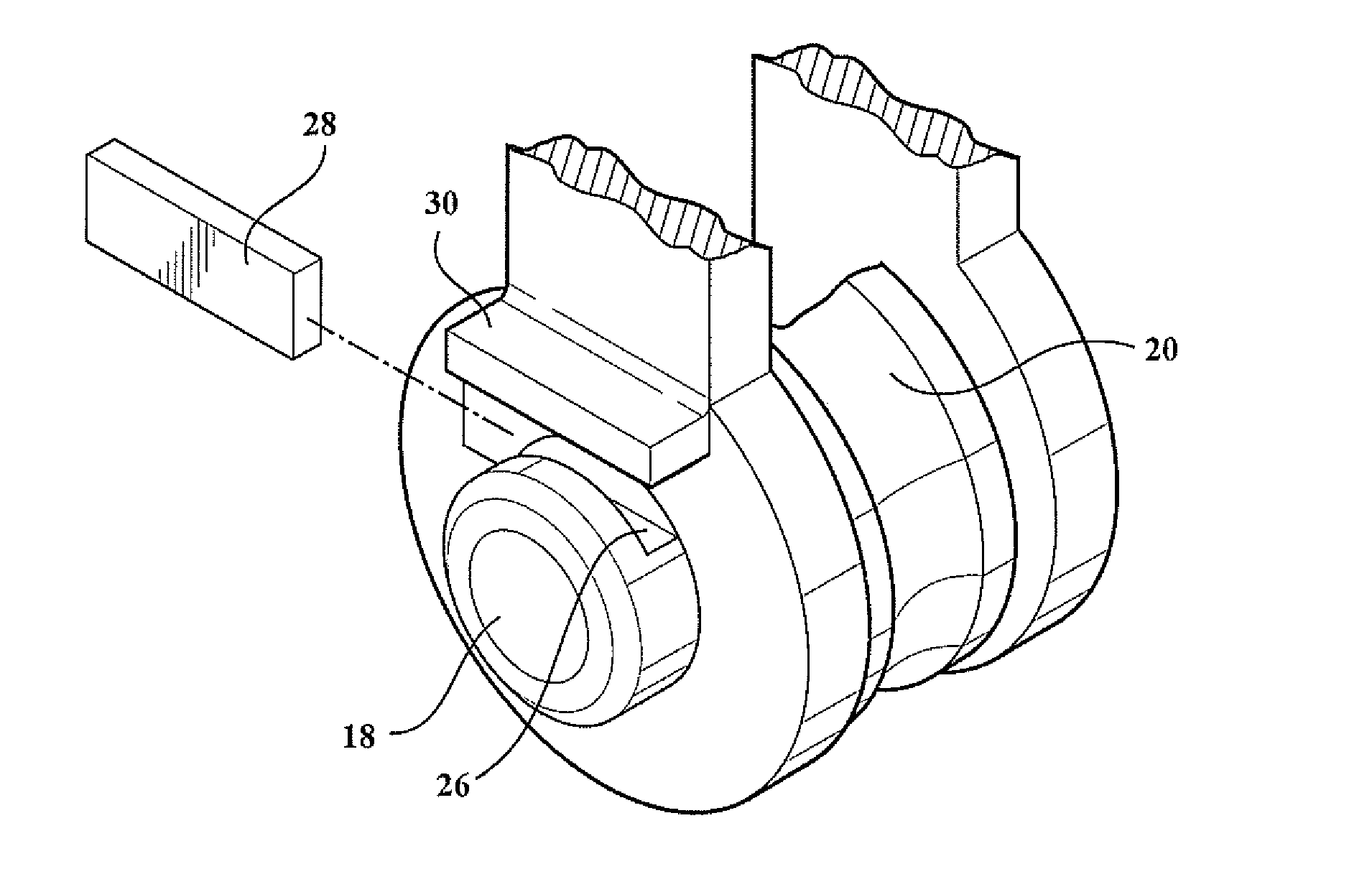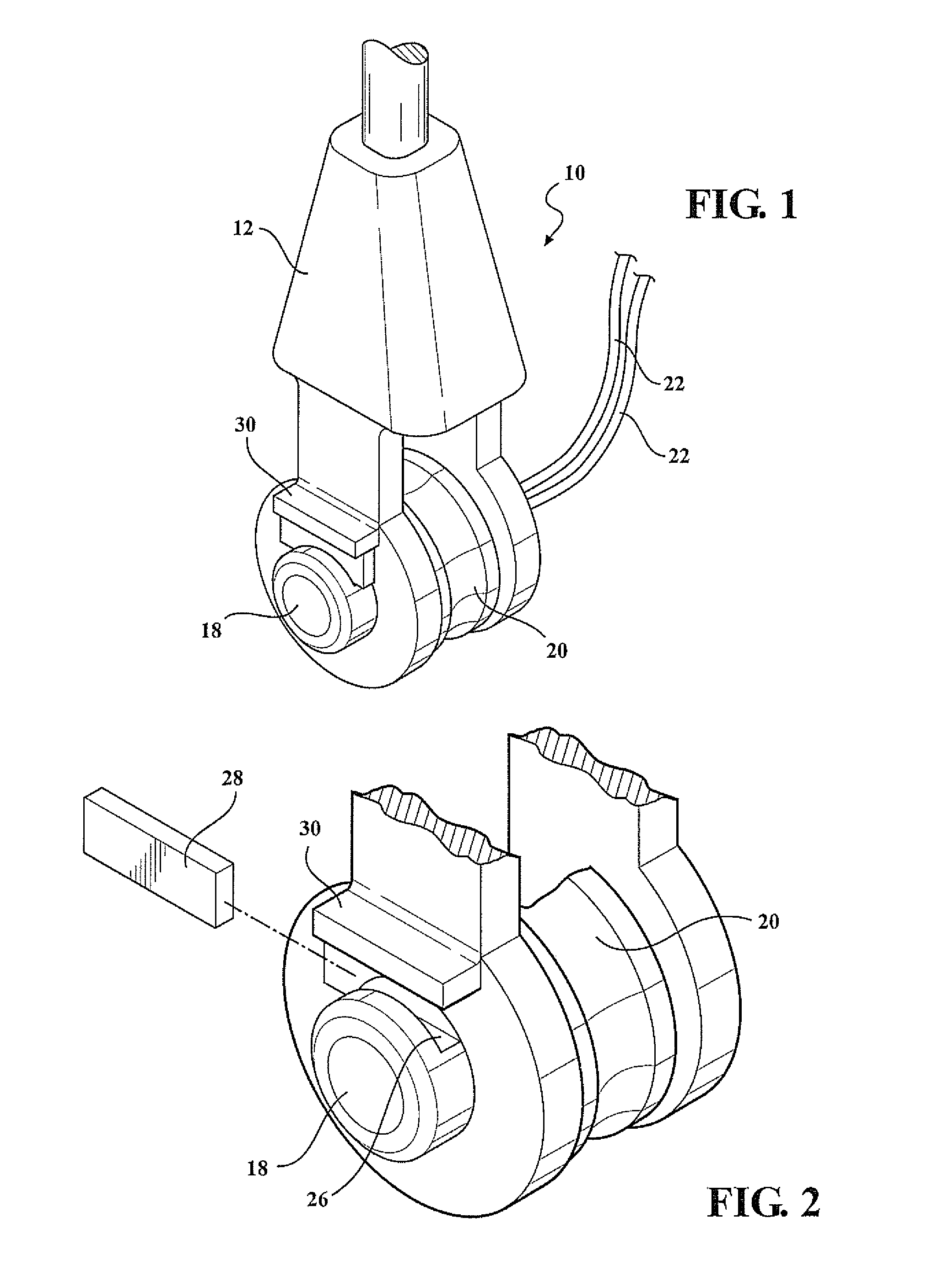Load and torque sensing systems utilizing magnetic key for mechanical engagement
a technology of magnetic key and mechanical engagement, applied in the direction of couplings, hoisting equipment, instruments, etc., can solve the problems of fragile components and/or high cost, and achieve the effect of facilitating the assembly and disassembly of load and torque bearing and/or transmitting assemblies
- Summary
- Abstract
- Description
- Claims
- Application Information
AI Technical Summary
Benefits of technology
Problems solved by technology
Method used
Image
Examples
Embodiment Construction
[0018]Referring to FIGS. 1-5, there is shown a clevis structure 10, sometimes called a “shackle”, of the type typically used as a pulley to carry a vertical load. It can also be used to anchor a rod or cable. The structure 10 comprises the clevis body 12 having spaced apart, parallel legs 14, 16, the larger lower circular portions of which are drilled out to exhibit holes 15, 17 that are coaxial and equal in diameter. An instrumented clevis pin 18 slides into and through the holes 15, 17 and is axially long enough to extend beyond the outsides of both of the clevis legs 14, 16 as best shown in FIG. 3. The clevis pin 18 is instrumented as a load cell of a known type, which cell generates electrical signals representing vertical load as a function of bending in the pin 18. These signals are connected by wires 22 to a recording and / or analytical system, such as a computer (not shown). A pulley 20 is mounted on the smooth center portion 24 of the clevis pin 18 for rotation relative ther...
PUM
| Property | Measurement | Unit |
|---|---|---|
| force | aaaaa | aaaaa |
| magnetic force | aaaaa | aaaaa |
| size | aaaaa | aaaaa |
Abstract
Description
Claims
Application Information
 Login to View More
Login to View More - R&D
- Intellectual Property
- Life Sciences
- Materials
- Tech Scout
- Unparalleled Data Quality
- Higher Quality Content
- 60% Fewer Hallucinations
Browse by: Latest US Patents, China's latest patents, Technical Efficacy Thesaurus, Application Domain, Technology Topic, Popular Technical Reports.
© 2025 PatSnap. All rights reserved.Legal|Privacy policy|Modern Slavery Act Transparency Statement|Sitemap|About US| Contact US: help@patsnap.com



